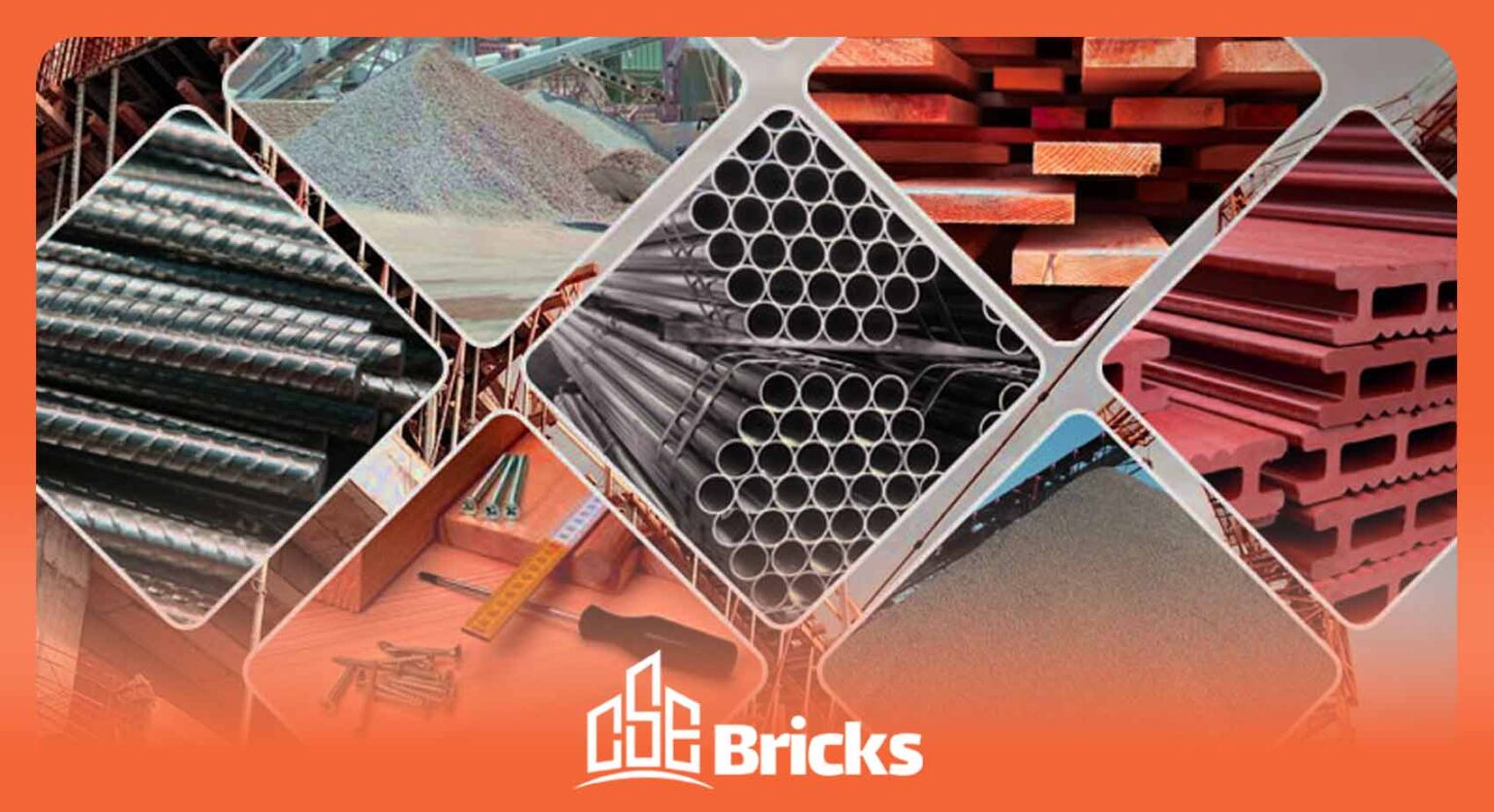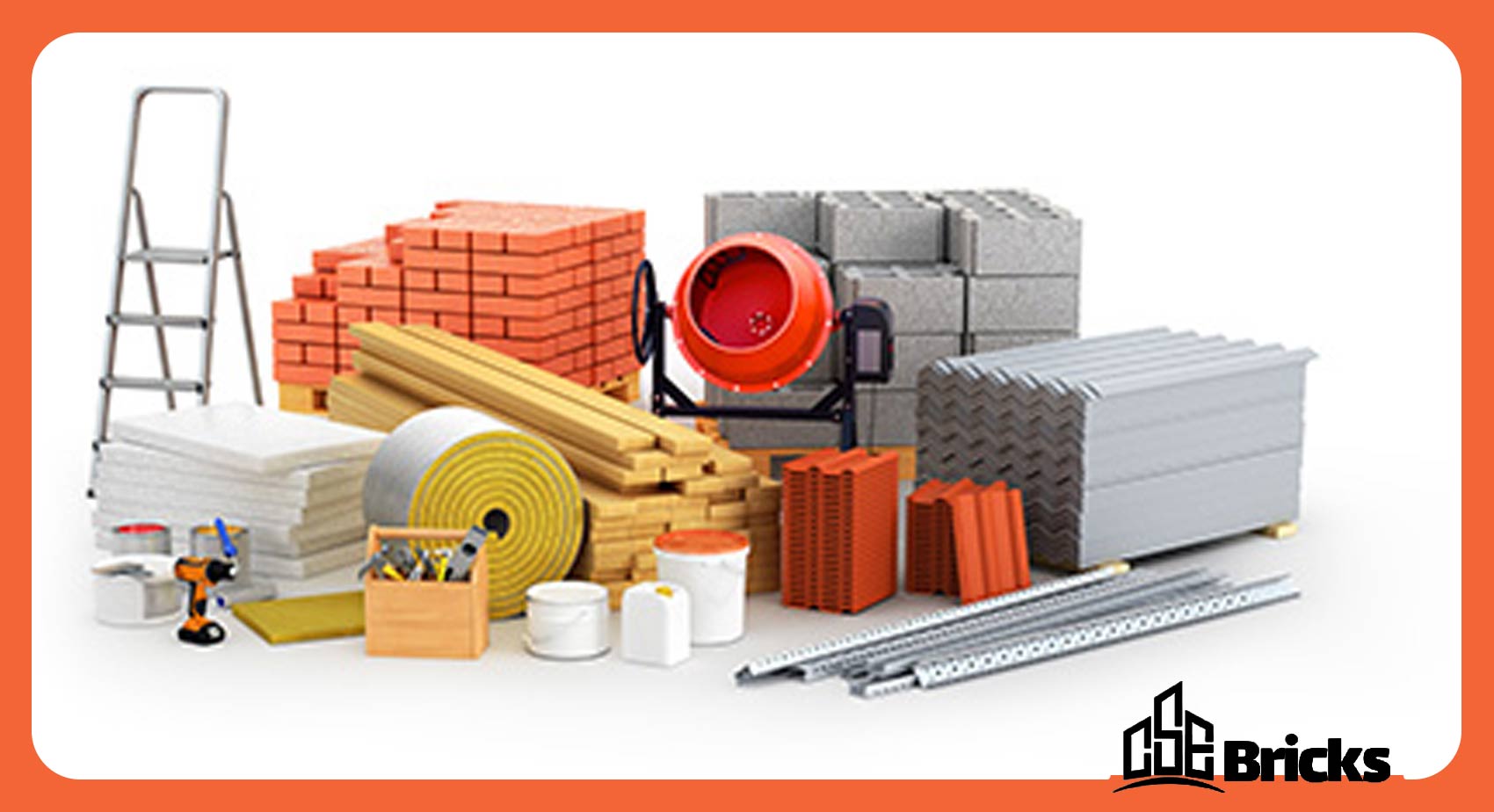المدونة
ما هي مواد البناء؟

ما هي مواد البناء؟
مقدمة ومراجعة لخط الإنتاج
يتم يوميًا بناء العديد من المباني حول العالم، باستخدام مواد بناء متنوعة لإنشاء عدد لا يحصى من المنشآت مثل المباني، الأرضيات، الأرصفة، الأنفاق، الطرق، الجسور، والمزيد.
ما هي مواد البناء؟
تشير مواد البناء إلى أي مادة تُستخدم في البناء. تشمل الأنواع المختلفة الأسمنت، المعادن، الطوب، التربة، وغيرها. يقوم البناؤون باختيار المواد اللازمة بناءً على الموقع والميزانية.
بالإضافة إلى المواد المذكورة أعلاه، والتي تشمل مواد البناء التقليدية، يتم استخدام مواد طبيعية متنوعة مثل الخشب، الحجارة، الأغصان، والأوراق في بناء الهياكل المختلفة. ومن الجدير بالذكر أن مواد البناء الصناعية تحظى أيضًا بشعبية كبيرة في الوقت الحاضر.
أنواع مواد البناء
• مواد البناء مسبقة الصنع
مواد البناء مسبقة الصنع هي مواد أساسية يمكن تركيبها وتجميعها بسهولة في موقع البناء، حيث يتم تصنيعها مسبقًا في المصانع.
• مواد البناء الحديثة
تتميز مواد البناء الحديثة، بفضل التقدم التكنولوجي وجهود المهندسين، بخصائص ومزايا تسهم في حماية البيئة وتقليل التكاليف.
• مواد البناء النانوية
أصبح لتقنية النانو اليوم تطبيقات واسعة في أنظمة البناء، وبفضل مقاومتها للحرارة، الماء، الزيوت، الرطوبة، الضغط وغيرها، فهي تحظى بشعبية كبيرة في قطاع البناء.
• مواد البناء الخاصة بالواجهات
تلعب مواد بناء الواجهات دورًا مهمًا في جاذبية المبنى. وبحسب المبنى وتفضيلاتك الشخصية وكذلك الظروف المناخية، يمكنك اختيار مواد الواجهة بناءً على نوعها، استخدامها، خصائصها، والمكان المخصص لها. (لمزيد من المعلومات حول طوب الواجهات، يُرجى الرجوع إلى المقال المتعلق على موقعنا.)
مواد البناء العضوية
مواد البناء العضوية خفيفة الوزن، ويتم إنتاجها باستخدام المواد الخام الطبيعية والمحلية.
• مواد البناء الذكية
تُستخدم مواد البناء الذكية غالبًا في المباني الحديثة نظرًا لخصائصها العملية التي تسمح لها بالتكيف بشكل أفضل مع الظروف البيئية.
• مواد البناء المقاومة للحريق
تساعد مواد البناء المقاومة للحريق الأفراد على الحصول على وقت أطول لإنقاذ حياتهم أثناء حدوث حريق.
تعرّف على أكثر مواد البناء استخدامًا!
الخرسانة:
الخرسانة هي أهم وأكثر مواد البناء استخدامًا، وتتكون من الإسمنت، الركام الناعم والخشن، والماء بنسب محددة. كما يمكن إضافة مواد كيميائية اختيارية لتسريع أو إبطاء عملية تصلب الخرسانة.
تعتمد خصائص الخرسانة على كمية ونسبة مكوناتها. وتُستخدم الخرسانة بشكل شائع في الإنشاءات التي تتطلب القوة والمتانة.
اليوم، يتم بناء معظم المباني السكنية، التجارية، والصناعية باستخدام الخرسانة.
أنواع الخرسانة وتطبيقاتها في البناء:
يتم استخدام أنواع مختلفة من الخرسانة في البناء، مثل الخرسانة العادية بالإسمنت، الخرسانة المسلحة، الخرسانة سابقة الإجهاد، وغيرها. وتُستعمل الخرسانة في بناء المباني، الجسور، السدود، الأبراج، الطرق، وأكثر.
Cement:
Cement is a binding material used for building construction. It is produced by burning a specific mixture of raw materials such as lime, silica, and alumina at high temperatures and then grinding the resulting clinkers into a fine powder. Cement is the most expensive component of concrete and comes in various types. When mixed with water, its particles undergo a chemical reaction, transforming into a pasty and adhesive substance.
Types of Cement and Their Applications in Construction:
The properties of cement depend on its chemical composition, manufacturing process, and degree of fineness. There are approximately 16 types of cement used in construction, depending on the type of structure. The most common types of cement used are Ordinary Portland Cement (OPC) and Portland Pozzolana Cement (PPC). Cement’s adhesive properties make it suitable for making mortar and sometimes for facades. It is used in the construction of buildings, dams, roads, curbs, bridges, railways, and more.
Fine Aggregates:
Fine aggregates are inert filler materials in concrete, obtained from natural stones and crushed sands with particle sizes less than 5 millimeters. The most well-known fine aggregate was river sand, which has now been replaced by sand produced from crushed granite.
Fine aggregates play a crucial role in the composition of concrete, contributing to its workability, strength, and durability. They fill the voids between the coarse aggregates, ensuring a dense and well-compacted mixture.
Coarse Aggregates:
Coarse aggregates are another type of filler material with sizes ranging from 4.5 to 150 millimeters, most commonly around 20 millimeters. Crushed stones from quarries and gravel, as well as old concrete from demolished buildings, are used as coarse aggregates.
Additives:
Additives are optional components of concrete that are added to modify certain properties to improve its performance. The volume of additives added to the concrete mix depends on the specific requirements and varies from case to case.
Types of Additives:
Additives are of two types: mineral additives and chemical additives.
Mineral Additives: These are solid additives that can replace cement in the concrete mix. The most common mineral additives include fly ash, ground granulated blast furnace slag (GGBS), silica fume, rice husk ash, and met kaolin.
Chemical Additives:
Chemical additives are liquid substances added to the concrete mix to modify its properties. Some examples of chemical additives for concrete include water-reducing additives, superplasticizers, air-entraining agents, corrosion inhibitors, curing agents, and shrinkage-reducing additives.
Mortar:
Mortar is one of the oldest building materials, made using binders and fine aggregates. The most common binder used in mortar is cement; however, lime can also be used as a binder.
Mortar is widely used for binding building blocks such as bricks, stones, and concrete masonry units, ensuring stability and strength in the construction of walls, floors, and various structural elements. Mortars are a type of refractory (fire-resistant) material composed of soft, heat-resistant materials. When mixed with water, they acquire a plastic-like property. Mortar is used in masonry work, plastering, repair, and patching.
Bricks:
Bricks are rectangular blocks usually made from clay or mud, which are hardened by heat or a chemical process. Bricks are bonded with mortar, which holds them in place and bears the loads applied to them.
Bricks Nowadays, bricks are available in various types such as concrete, fly ash, lime, calcium silicate, ceramic, and more. Among these, concrete bricks and بالطوب الليغو have gained popularity in modern construction.
Bricks are used in masonry walls, pathways, corridors, fireplaces, and more.
csebrick.com: This company provides various production lines for interlocking brick machines both domestically and internationally. For more information on producing interlocking bricks without the need for kilns and fuel, please contact our technical experts.
Stone:
Stone is also one of the oldest types of building materials that has been used since ancient times. Stone gives a superior appearance to structures. The main drawback of stone is that natural stones come in different sizes and shapes, which can make them challenging to use in construction.
Types of Stone and Their Applications:
The most common types of stones are sandstone, granite, marble, limestone, and laterite. Masonry using stone is more common in areas where local stones are available.
Stones are used for:
- Foundations
- Floors
- Retaining Walls
- Arches
- Walls
- Columns
Timber:
Timber is one of the oldest building materials, made from trees in specified dimensions. Nowadays, its use is often limited to the construction of doors, windows, closets, cabinets, shelves, and interior decorations. The most commonly used types of timber include oak, ash, fir, pine, spruce, cedar, walnut, redwood, and even plywood. Timber enhances the beauty of a building.
Timber is used in wooden structures, flooring, walls, roof frames, doors, windows, furniture, interior decorations, and more.
Glass:
Glass is widely used in modern buildings not only because of its architectural appeal but also due to its ability to let sunlight through, its recyclability, and its insulating properties. Glass is available in various forms on the market, with the most commonly used types being plain, transparent, and colored glass.
Glass is used in the construction of doors, windows, floors, non-load-bearing walls, skylights, and to enhance the appearance of building facades.
Tiles:
Tiles are factory-made thin slabs that can be used to cover the surface of walls, floors, ceilings, parking areas, corridors, and more. They are made from materials such as ceramic, porcelain, and even recycled plastic. Tiles are not only functional but also enhance the aesthetic appeal of modern buildings. The most attractive feature of tiles is that they come in a variety of colors and surface finishes, such as matte, glossy, plain, glazed, and customizable shapes. The arrangement of tiles can create interesting patterns.
Some common flooring materials include wood, marble, granite, and mosaic. While they are expensive, they do not offer a wide range of options. Tiles can be used both on the floor and on walls
Applications of Tiles in Various Environments
- Flooring: Provide a beautiful covering that enhances the interior décor of a building.
- Bathrooms: Used as wall and floor tiles to ensure a waterproof and easy-to-clean surface.
- Kitchens, Parking Areas, Sidewalks, Terraces: Versatile and durable, suitable for both indoor and outdoor use.
Foam:
Foam is a type of synthetic building material made from polyurethane and synthetic chemicals, used as packaging materials to enhance the thermal insulation properties of a building. They can also be sprayed onto a surface to prevent air and water infiltration. Foams are mostly used in external walls, attics, basements, and crawl spaces.
Bitumen:
Bitumen is a non-crystalline sticky material derived from petroleum. It is used in the construction of flexible pavements on roads and airports.
This type of building material is also used in roofing and road construction.
Other Building Materials
Here are some other types of building materials used in construction:
Earth: Earth or mud can be used to construct small, non-essential, and temporary structures.
Thatch: Thatch roofs are still common in tropical regions of the world.
Paving Blocks: Paving blocks are used in gardens, parking areas, and sidewalks. The latest trend in paving blocks is manufacturing them using waste plastic materials.
In conclusion, there is a wide range of building materials available for constructing buildings, infrastructure, and other structures. The choice of building materials depends on various factors, including climate, building performance, and the aesthetic requirements of the project. In recent years, we have witnessed the development of new materials and technologies that are more efficient, sustainable, and environmentally friendly.
The production of interlocking bricks with an interlocking brick machine has been one of the innovations that significantly contribute to reducing energy consumption and greenhouse gas emissions.
What do you think are the most commonly used materials in construction?















